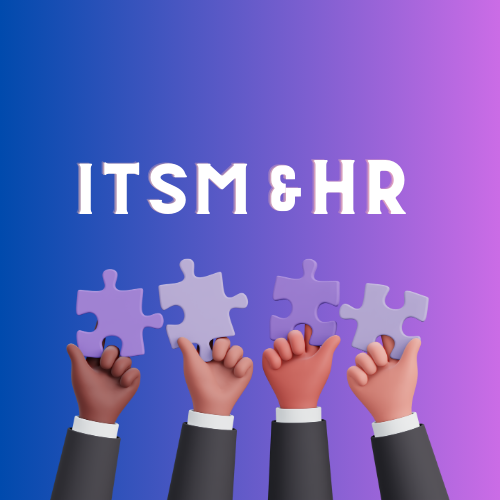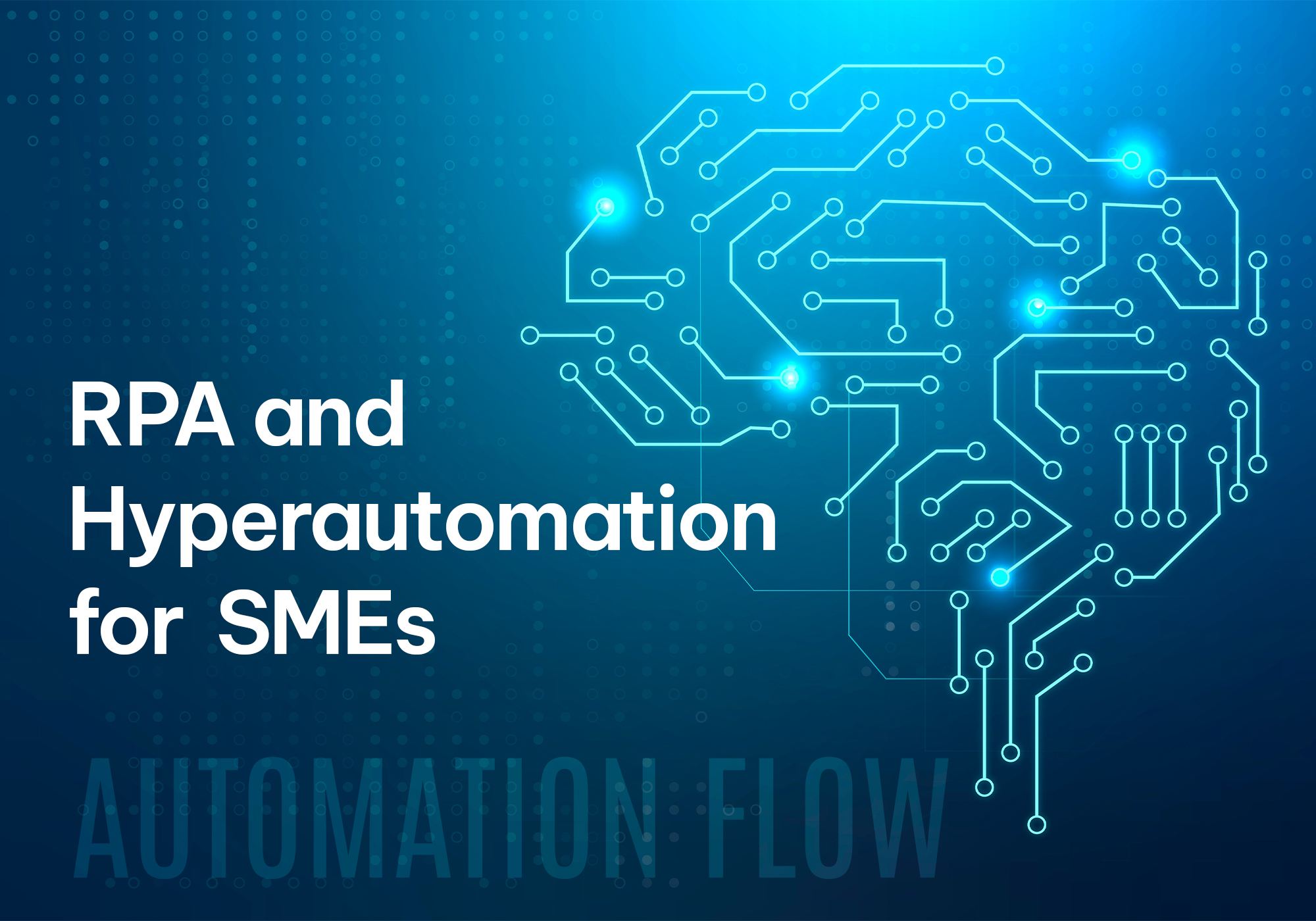We are pleased to announce that Jira users can now access the power of Autom Mate from the Atlassian Marketplace…
Continue reading[START] – [STOP] Hyperflow
How to Simplify the Complexity of Automation and Integration Projects…
Continue readingHow to Simplify 4me/Xurrent Integration & Automation
At Autom Mate, we have extensive experience of Service Management tools and how easy it is (or not) to integrate and automate processes with them. An ecosystem of partners and integration technologies has evolved to cater for the needs of the customer and to help them unlock the true capabilities of ITSM, ESM & SIAM.
4me/Xurrent is a tool that has gained good traction with customers looking for greater collaboration with interconnected office locations, suppliers and the ability to understand and monitor the cost of services across the enterprise.
One key theme though, is that customers still require another tool to integrate back-office systems with their 4me/Xurrent instance. This is commonly taken care of with the help of a partner and the Workato platform.

Example integrations
Common integrations with 4me/Xurrent include SCCM, Active Directory, DevOps tools, HR systems and other Service Management applications like ServiceNow. These tend to work well but are expensive and often add significant cost to the 4me/Xurrent implementation.
Integration and automation are changing
Automation and integration have changed. It is now much easier to not only create these integrations, but it is also very simple for the customer to create and manage their flows themselves. This gives the customer more control and makes them less vendor and partner reliant. Of course, the customer may wish to keep working with their trusted partner when managing their flows, but they should certainly be questioning the cost and ease of doing so.
What should Xurrent customers do?
The automation and integration landscape are accelerating towards better value and performance for the customer and Autom Mate is at the forefront of that change. Autom Mate offers many Xurrent integrations and automations (Automs) that you can setup and start using in minutes. Examples include:
- 4me/Xurrent Jira Ticket Integration
- 4me/Xurrent to ServiceNow Incident Integration
- ServiceNow to 4me/Xurrent Incident Integration
- 4me/Xurrent – Jira Bidirectional Ticket Creation
- MS Teams 4me/Xurrent Ticket Integration
- WhatsApp 4me/Xurrent Ticket Integration
- 4me/Xurrent to FreshService Ticket Integration
- 4me/Xurrent Twilio Integration
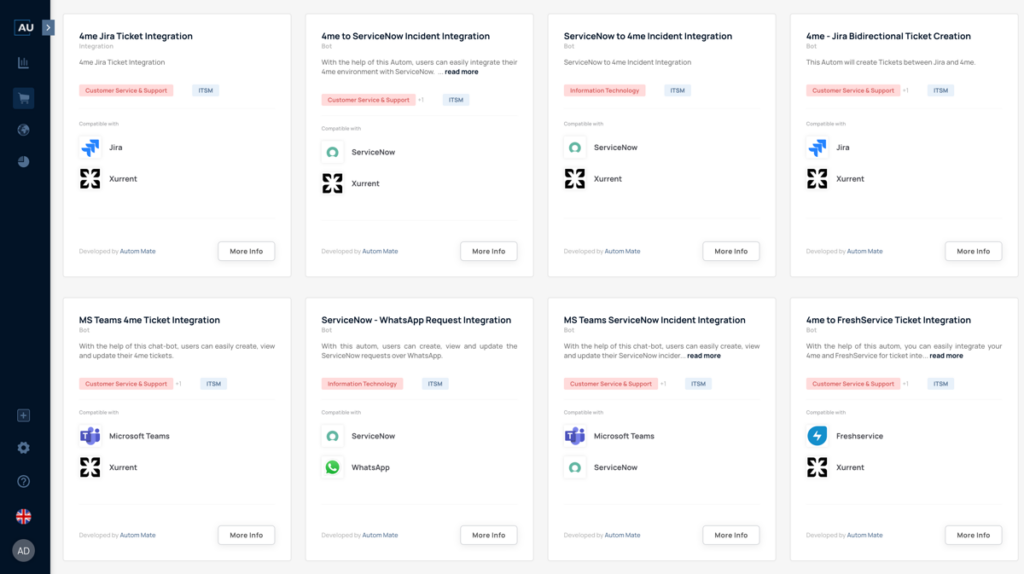
AND… We take pride in the fact that users can easily design and build their own Automs for specialist requirements using our visual building process.
We take Service Management integration very seriously. An interconnected ITSM or ESM platform is a much more effective and business critical tool. Autom Mate is the solution that will help Xurrent customers unlock even more creative and impactful capabilities while also giving them more autonomy and reducing their integration and automation costs.
Taking the next step
Let’s keep things simple. We offer 3 ways for companies to engage with our technology and understand more about how we can help. If you are already a Xurrent customer and have integrations in place, then perhaps a personalised demo is the way to go. You may also want to try the product for yourself. We offer a 30-Day free trial that also includes free help getting started from the Autom Mate team.
Our mission to bring hyperautomation and orchestration to the masses continues. We would love to have you with us on that journey!
Advances in Automation and Integration: Why legacy iPaaS Can’t Keep Up
Automation and integration are transforming the way businesses operate. New technologies are making processes smarter, faster, and more efficient than ever before. As industries evolve, it’s becoming clear that older iPaaS platforms just can’t keep pace with the growing demands of modern workflows.
But rather than focusing on the shortcomings of legacy iPaaS systems, let’s explore 3 exciting ways in which advanced automation and integration tools are reshaping business. From streamlining operations to enhancing customer experiences, these new technologies are unlocking potential in ways we never imagined. Here’s how:
1. Seamless Integration Across Platforms
Older tools often require complex, time-consuming setups and custom coding to connect with other systems. In contrast, modern integration platforms enable seamless, out-of-the-box connectivity across a variety of applications. This reduces friction, minimizes errors, and allows businesses to operate with a unified ecosystem.
What’s new?
Plug-and-play integration with minimal configuration required.
Why it matters:
Saves time, reduces human error, and accelerates adoption of new tools.
2. Real-Time Automation
One of the most significant advantages of new automation tools is their ability to perform tasks in real-time. Whereas older systems often required manual intervention or scheduled runs, today’s solutions can instantly respond to triggers, acting as soon as conditions are met.
What’s new?
Instant, intelligent decision-making based on live data.
Why it matters:
Enables faster responses, real-time analytics, and more agile operations.
3. Improved Scalability and Flexibility
Older tools can become cumbersome as businesses grow, requiring additional hardware, manual updates, and custom solutions. Newer automation technologies, especially cloud-based platforms, offer unmatched scalability. They easily adjust to increased workloads or changes in business needs, ensuring that your operations can expand seamlessly.
What’s new?
Cloud-based solutions that scale effortlessly with business growth.
Why it matters
Reduces the risk of system limitations, allowing businesses to grow and evolve without constraints.
How Autom Mate can help you
Autom Mate provides enterprise capabilities in an easy-to-use platform that can deliver complex hyperflows for less than it costs to book 3 days of consultancy! Sound too good to be true? Why not take a few minutes to check out what we are doing at Autom Mate. Global brands like Shell, Muller, Vodafone and Koc are already delivering agile hyperflows for less and the feedback from our customers is incredible.
Forging the Future Together: A New Year’s Message from our CEO David Griffiths on Partnerships and Possibilities
Happy New Year, friends and partners! As we step into 2025, I can’t help but feel a surge of excitement about the journey ahead. This year holds incredible promise, not just for Autom Mate, but for all of us who share the vision of making automation accessible to businesses of every size.
A Personal Note on Partnerships
I’ve always believed that the best partnerships are like friendships – they’re built on trust, shared goals, and a genuine desire to see each other succeed. As we embark on this new year, I want you to know that I’m personally committed to nurturing these relationships. My virtual (and physical!) door is always open. Whether you have a brilliant idea, a challenging question, or just want to chat about the future of automation, I’m here and eager to connect.
Exciting Opportunities Ahead
2025 is shaping up to be a year of transformation, and I’m thrilled about the possibilities it brings for collaboration and growth. We’re not just expanding our offerings; we’re creating a playground for innovation where all of us – Autom Mate, our partners, and our customers – can thrive together.
New Avenues for Growth
- Value-Added Reselling: This isn’t just about adding another product to your portfolio. It’s about empowering you to offer COMPLETE solutions that can truly transform your clients’ businesses. With our consumption-based model, you have the flexibility to cater to businesses of all sizes, opening up new markets and strengthening your client relationships
- Implementation Services: We’re investing heavily in resources to support you in delivering high-impact implementations. This is your chance to become the go-to expert for automation solutions, driving rapid ROI for clients and building long-term partnerships.
Tools for Success
- Community Edition: Think of this as our sandbox – a free space for your team to play, experiment, and innovate without any financial pressure. It’s the perfect way to get hands-on experience with our platform
- MSP Edition: For our Managed Service Provider partners, this edition is a game-changer. It’s designed to help you unlock new revenue streams and deliver cutting-edge automation services to your clients
Let’s Build Something Amazing Together
What excites me most about 2025 is the potential for collaboration. Together, we’re not just selling software; we’re pioneering a movement towards more efficient, agile, and innovative businesses. Every partnership, every implementation, every success story contributes to this vision. I’m committed to making this journey as rewarding for you as it is for us. That’s why I’m making myself more available than ever. Whether it’s a quick call, a detailed strategy session, or even grabbing a coffee (virtual or real!), I want to hear your thoughts, understand your challenges, and explore how we can grow together.
An Open Invitation
As we dive into 2025, I extend a warm invitation to all our partners – current and future. Let’s connect, brainstorm, and create opportunity and business impact together. Your success is our success, and I’m personally invested in making sure we achieve great things this year. To those who’ve been with us on this journey – thank you for your trust and collaboration. To those considering joining our ecosystem – we’re excited to welcome you and support your growth. Here’s to a year of innovation, partnership, and shared success. Let’s make 2025 our best year yet!
Warmest regards

David Griffiths
CEO, Autom Mate
P.S. My email is David.Griffiths@autommate.com and my calendar is open for partner meetings every Thursday. Don’t hesitate to reach out – I’m looking forward to our conversations!
Vendor Integration Marketplace vs iPaaS – Which One Is Best?
When it comes to picking the right integration approach, two popular options often come up: Vendor Integration Marketplaces and iPaaS (Integration Platform as a Service). But what’s the difference? Which one is best for your business? Seconds out…Ding!
What Are Vendor Integration Marketplaces?
A Vendor Integration Marketplace is like a digital store that offers pre-built integrations between your systems and third-party applications. Essentially, it’s a one-stop shop where you can pick and choose the integrations you need to make your software work better together.
Key Features of Vendor Integration Marketplaces:
- Pre-Built Connectors: Ready-made integrations with a wide range of software tools.
- Multiple Vendors: Access to various software vendors and their applications in one place.
- One-Time Setup: Once you choose the integration, it usually works right out of the box.
What Are iPaaS Solutions?
iPaaS (Integration Platform as a Service) is a cloud-based solution that helps businesses connect different software applications, systems, and data sources in real-time. The primary purpose of iPaaS is to streamline and simplify the process of integrating various tools, allowing them to communicate and share data seamlessly.
Instead of building complex integrations from scratch, iPaaS provides pre-built connectors, workflows, and APIs that make it easier to link your applications and automate processes. It can integrate cloud-based software, on-premise systems, and even legacy applications, all in one platform.
Key Features of iPaaS Solutions:
- Custom Integration: Build tailored workflows and integrations based on your specific needs.
- Real-Time Data Syncing: Keep all your applications up-to-date with live data flow.
- Cloud-Based & Scalable: Easy to scale as your business grows.
- Centralized Control: Monitor and manage all integrations in one dashboard.
Why Choose iPaaS Over Vendor Integration Marketplaces?
Now, let’s dive into the advantages of using iPaaS over Vendor Integration Marketplaces.
Tailored Solutions for Your Business:
With iPaaS, you can create customized workflows and integrations that are specific to your needs, which means better functionality and more control over your business processes.
Seamless Automation:
iPaaS platforms offer powerful automation features. Imagine all your systems syncing in real-time without having to manually update anything. That’s time saved and fewer errors!
Scalability as You Grow:
As your business expands, you might outgrow the marketplace’s offerings. iPaaS solutions grow with you, offering more features, integrations, and customizability as your business needs evolve.
Centralized Integration Management:
With iPaaS, you have a single dashboard to monitor and manage all your integrations. This means better visibility into your systems, less complexity, and faster troubleshooting.
Reduced IT Dependency:
Since iPaaS is designed to be user-friendly, your non-technical teams can often set up and manage integrations without needing constant IT support. This helps save time and resources.
Greater control of costs
Marketplace integration costs can be one time or transactional depending on who built the integration – either vendor or third-party created. With iPaaS you have much greater visibility of cost over time.
Knockout Punch: Why iPaaS Is the Future of Integration
While Vendor Integration Marketplaces are a great starting point for simpler integration needs, iPaaS solutions take your business to the next level and can often save you money. The customizability, scalability, and control they offer make them ideal for businesses looking to streamline operations and grow without being held back by rigid, one-size-fits-all solutions.
If your business is growing and needs flexible, real-time integrations that can scale, iPaaS is the way to go. It provides all the power you need to keep your systems connected, automate tasks, and stay ahead of the competition. With iPaaS, you’re not just integrating—you’re optimizing for success!
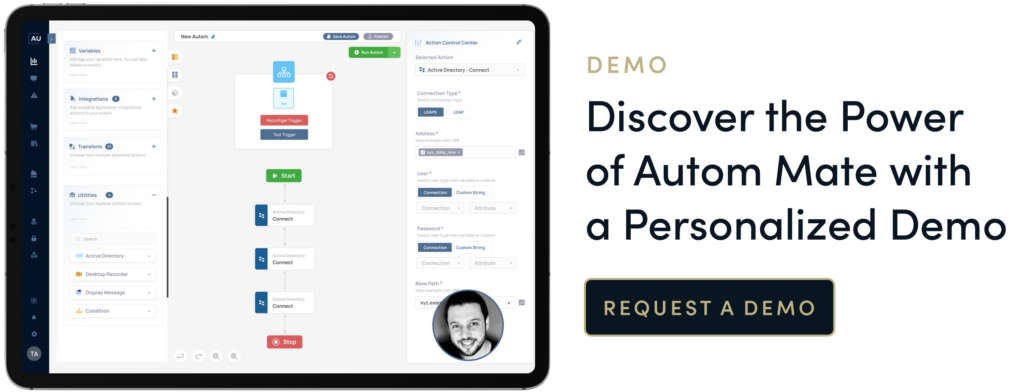
7 Advantages of Using an iPaaS Solution to Integrate Applications with TOPdesk
Integrating different applications with TOPdesk can significantly improve workflow and efficiency. An iPaaS (Integration Platform as a Service) solution simplifies this process. By using an iPaaS, organizations can connect their existing tools with TOPdesk without needing complex coding or technical expertise.
Here are some key advantages of using an iPaaS solution to integrate applications with TOPdesk:
1. Ease of Integration
iPaaS platforms provide pre-built connectors for a wide range of applications.Integration is simplified with drag-and-drop interfaces and no need for custom coding, making the process faster and more accessible for non-technical users.
2. Improved Efficiency
Automate repetitive tasks by linking systems while streamlining processes like ticket management, customer service, and IT support.Save time by synchronizing data between TOPdesk and other tools like CRM systems, email, or chatbots.
3. Faster ROI
iPaaS reduces setup time for integrations.New applications can be connected to TOPdesk quickly, speeding up the overall deployment.This minimizes the learning curve for teams, ensuring smooth transitions when adding new tools.
4. Scalability
Easily scale integrations as the business grows.iPaaS platforms can handle more complex workflows without significant changes to existing systems.New applications can be added as needed, with minimal disruption.
5. Data Consistency
Ensure that data is consistently updated across all platforms.Avoid data silos by syncing information between TOPdesk and other business applications.Reduce the risk of errors caused by manual data entry or outdated information.
6. Cost-Effectiveness
iPaaS platforms often offer pricing that is more affordable than custom-built integrations. This means organizations can reduce their reliance on expensive IT resources or consultants. They can also avoid the cost of ongoing maintenance for bespoke integration solutions.
7. Better Customer Experiences
Streamline customer support by integrating communication tools with TOPdesk.Offer a more seamless experience across different channels, from email to chat to phone, while quickly resolving customer issues by accessing all relevant data in one place.
Example Integrations with TOPdesk Using iPaaS:
Here are some common applications that can be integrated with TOPdesk using an iPaaS solution:
CRM Systems (e.g., Salesforce)
- Automatically create and update support tickets based on customer inquiries.
- Synchronize customer data to ensure agents have up-to-date information.
Communication Tools (e.g., Slack, Microsoft Teams)
- Send notifications to your team about new tickets or status changes.
- Use bots to automate responses and assign tickets directly from the chat platform.
HR Systems (e.g., BambooHR)
- Sync employee data with TOPdesk to quickly resolve IT-related issues for staff members.
- Automatically create tickets when employee onboarding or offboarding tasks are triggered.
Monitoring Tools (e.g., Intune, Lakeside)
- Create incident tickets in TOPdesk when an issue is detected in your monitoring system.
- Automatically update the status of tickets based on system monitoring data.
Conclusion
Using an iPaaS solution to integrate applications with TOPdesk provides several benefits, including simplicity, efficiency, and scalability. By connecting your tools through an iPaaS platform like Autom Mate, you streamline processes, enhance customer experiences, and maintain consistent data across systems. For businesses looking to improve their workflows and reduce manual tasks, an iPaaS integration with TOPdesk is an excellent solution.
Did you know that Autom Mate can do all this and more? If you are a TOPdesk customer looking to integrate and automate, then we would love to show you what our platform can do for you! Register for a demo to learn more.

How to Simplify, Scale & Accelerate ServiceNow Automation
Automation is one of the core strengths of ServiceNow, offering capabilities to streamline IT operations, customer service, and business processes. However, ServiceNow customers often face several challenges when implementing and managing automation via the ServiceNow Integration Hub. Much of these challenges relate to managing integration complexity, complex workflows and a requirement to use consultancy to both setup and maintain integrations.
So, what are the main automation challenges ServiceNow customers face?
- Integration Complexity – ServiceNow customers often want to integrate with multiple third-party systems and applications, such as CRM, ERP, monitoring tools, and other legacy systems. Achieving seamless automation requires robust integrations, which can be complex, time-consuming and therefore costly.
- Customization complexity – ServiceNow offers a high degree of customization, which, while powerful, can lead to overly complex workflows and automation configurations. As organizations scale, managing and maintaining customized automation processes becomes more difficult without constant help.
- Governance and Compliance – Automation processes often involve handling sensitive data or performing critical business functions. Ensuring that these automated processes comply with industry regulations (such as GDPR, HIPAA, etc.) is a significant challenge.
- Complex workflows – Workflow automation in ServiceNow involves mapping out intricate business processes. These workflows can become complicated as they involve multiple conditions, approvals, and interactions with other systems. A poorly designed workflow can slow down operations instead of speeding them up. Adding product and process integration into such workflows spirals the complexity and cost.
- Skills and Expertise – ServiceNow’s automation capabilities require a specific set of skills, such as scripting, workflow design, and API integration. Many organizations face a shortage of skilled personnel who can efficiently design, implement, and maintain automation processes. This means that they must rely on third-party integration consultants and ecosystem partners.
- Transaction-based Integrations – Reliance on multi-party integrations such as those found in vendor marketplaces often lead to transactional or volume-based charging. Such unpredictable cost models mean that budget conscious businesses will be restricted on expanding their useful integration and automation capabilities.
How can ServiceNow customers take control of their own automation and integration strategy?
While ServiceNow offers powerful capabilities, there are common factors in relation to automation and integration that lead to complexity and loss of overall control. It places companies at the behest of partners and consultants that design, implement and critically, maintain the automation and integrations they need. That is not to say that such partner relationships are a bad thing as they are often the backbone of technology success in Service Management.
It is also important to emphasise that it is not to the benefit of the customer to look at automation as one product to many. Quality automation projects regularly include multiple product integrations in a single flow. This is where Service Management platforms really struggle to achieve the goals of the customer without spiralling costs.
As we have noted, the primary challenges faced by customers involve integration complexity, managing customized workflows, ensuring compliance, scaling operations, and the need for skilled resources. Addressing these challenges with the Autom Mate Technology Orchestration Platform, makes it easier for both customers and their partners to orchestrate automation and integration with ServiceNow.
By doing so, the customer reduces complexity and reliance on the vendor ecosystem while also speeding up the whole process and enabling them focus on the opportunities that other technologies offer.
Why not arrange a demo of Autom Mate and see firsthand how it can help you get the best out of your ServiceNow investment. We will show how we can dramatically speed up your automation and integration strategy, connect more useful technologies and save you money!

HR and ITSM Integration & Automation
Problem Statement
In today’s fast-paced business environment, the onboarding processes for employees present significant challenges. HR departments often face the cumbersome task of collecting and disseminating necessary information, while IT teams grapple with setting up and managing numerous accounts and permissions across various applications. These manual processes not only consume valuable time but also increase the risk of errors and security vulnerabilities.

Solution Offered
With Autom Mate’s HyperAutomation platform, organizations can revolutionize their HR and ITSM integration and automation processes. By leveraging our no-code platform, businesses can streamline onboarding and offboarding procedures, significantly reducing manual effort and enhancing efficiency.
Impact on Business:
Simplified Onboarding Process:
- HR teams create onboarding forms within their ITSM software, capturing essential employee information such as contact details, department, and required application access.
- Autom Mate integrates with various applications, automating the account setup process based on the information provided in the onboarding form.
- Approval workflows can be seamlessly integrated, allowing managers to review and approve requests directly through channels like WhatsApp, eliminating delays and reducing human errors.
Result:
Accelerated onboarding process, improved accuracy, and enhanced productivity for HR and IT teams. Autom Mate offers a cutting-edge HyperAutomation platform, empowering organizations to automate complex workflows without the need for extensive coding. With our AI-supported platform, businesses can achieve unprecedented levels of efficiency, accuracy, and productivity.

Autom Mate: Pioneering HyperAutomation Excellence
Autom Mate offers a cutting-edge HyperAutomation platform, empowering organizations to automate complex workflows without the need for extensive coding. With our AI-supported platform, businesses can achieve unprecedented levels of efficiency, accuracy, and productivity.
Join us on the journey towards a future where automation drives success and innovation thrives
Navigating RPA and Hyperautomation for Small Businesses: Benefits, Use Cases, Trends
As in their nature, small and medium-sized enterprises (SMEs) are always looking for ways to improve their efficiency and stay ahead of the competition, and as we’re entering the age of robots, automation has become an increasingly popular solution to help streamline business processes and increase productivity. While traditional automation has been helpful, intelligent automation using Robotic Process Automation (RPA) and Hyperautomation offers SMEs even greater benefits. According to a Forbes article, the future of automation lies in hyperautomation, which refers to combining RPA with artificial intelligence and machine learning to automate complex business processes.
In this blog post, we’ll explore the benefits, use cases, and trends of RPA for small businesses and provide examples of how these technologies can help small businesses improve their operations and compete more effectively in today’s marketplace.
Benefits of RPA & Hyperautomation for Small Businesses (SMEs)
Small businesses face unique challenges and often operate with limited resources. By leveraging RPA and hyperautomation, SMEs can benefit from increased efficiency, cost savings, and improved communication. Here are some of the main advantages of using these technologies:
Boosting Integrations
Hyperautomation unifies AI, ML, and NLP into one cohesive platform, enhancing overall system efficiency and offering an advanced level of automation. Small businesses, often restricted by limited resources and scalability challenges, find a lifeline in RPA and hyperautomation. They’re not just tools but essential allies in streamlining operations and boosting efficiency.
By optimising business processes, small enterprises are able to reduce operational costs, improve service delivery, and position themselves for competitive advantage and sustainable growth, without the complexities typically associated with advanced technologies. It’s a straightforward path to efficiency, scalability, and performance optimization, tailored to meet the unique needs and constraints of smaller operations.
A Better Communication Flow with Integrations
Integrating different systems and applications can be tedious for small businesses. However, hyperautomation can help create a better communication flow with integrations, allowing businesses to connect different systems and applications with ease, which leads to better collaboration and communication between departments, leading to improved decision-making and operational efficiency.
Higher Employee Satisfaction
The enhancement of employee well-being and job satisfaction is a pivotal aspect of organizational success. Through the integration of RPA and hyperautomation, we are positioned to transform the work landscape. These technologies are engineered to manage routine and repetitive tasks, allowing our valued employees to redirect their focus towards complex, intellectually stimulating projects.
In a workspace where automation streamlines efficiency, employees are entrusted with tasks that are both challenging and rewarding. The elimination of mundane tasks mitigates the risk of burnout, promoting an atmosphere of innovation, engagement, and heightened morale.
In essence, the strategic application of automation technologies is not merely a pathway to operational efficiency but a catalyst for workforce enrichment and organizational vitality.
Cost Saving
RPA and hyperautomation can lead to cost savings for SMEs. By automating repetitive tasks, businesses can reduce their reliance on manual labour and save money on labour costs. Additionally, automation can lead to fewer errors and faster processing times, reducing the need for costly rework. According to Vuram, Hyperautomation can result in up to 30% cost savings for businesses.
Scalability
Scalability is another benefit of RPA and hyperautomation for small businesses. As a business grows, its processes become more complex, and it can be challenging to keep up with the demand. However, with RPA and hyperautomation, businesses can scale their operations without incurring additional overhead costs.
Amplifies Automation Of Work
RPA and hyperautomation also amplify the automation of work, making it possible to automate tasks that were previously too complex or time-consuming to automate. This leads to greater efficiency, productivity, and speed.
Fosters Team Collaboration
Hyperautomation fosters team collaboration, allowing team members to work together more effectively and efficiently. This leads to improved decision-making, greater operational efficiency, and better outcomes.
Advanced Analytics And Insights
Advanced analytics and insights are another benefit of RPA and hyperautomation. By automating data collection and analysis, businesses can gain valuable insights into their operations, identifying areas for improvement and optimization.
Increases Business Agility
Hyperautomation increases business agility, allowing businesses to adapt quickly to changing market conditions and customer demands. This helps SMEs remain competitive and relevant in today’s fast-paced business landscape.
Improved Data Accessibility And Storage
Improved data accessibility and storage are another benefit of RPA and hyperautomation. By automating data collection and storage, businesses can ensure that their data is accurate, up-to-date, and easily accessible to authorised personnel. This can help businesses make informed decisions and improve their operations over time.
Use Cases of RPA & Hyperautomation for Small Businesses (SMEs)
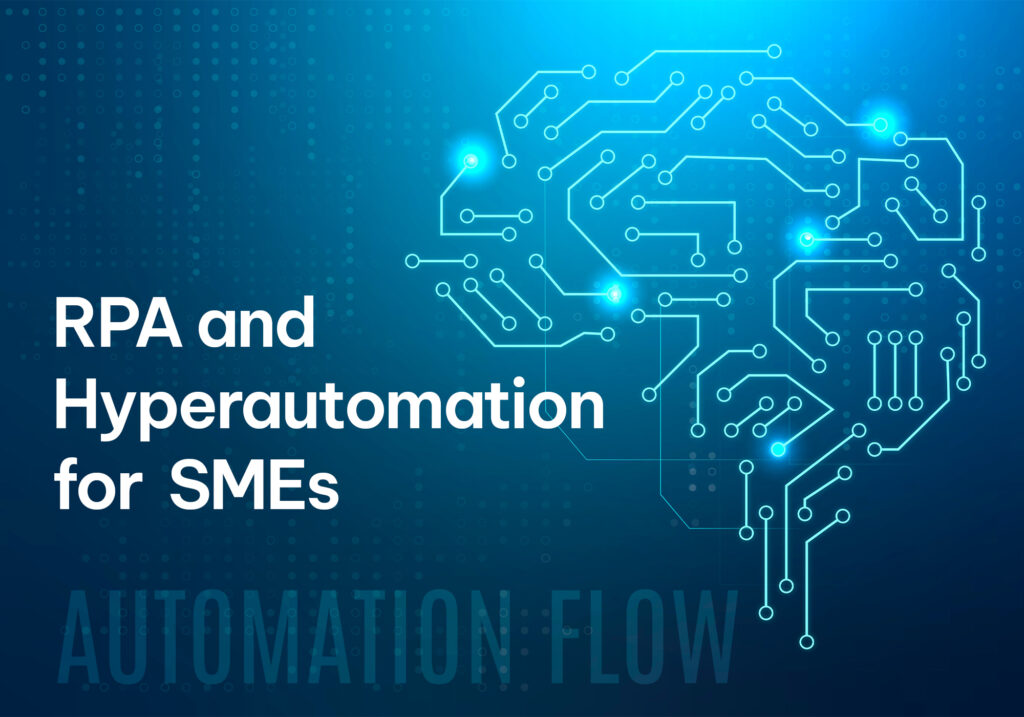
Small businesses can benefit from a wide range of use cases of Robotic Process Automation (RPA) and hyperautomation. Here are some examples of how automation can transform different aspects of a small business.
Accounting & Bookkeeping
Accounting and bookkeeping are essential functions of every small business, and automating these tasks can save significant amounts of time and improve accuracy. With RPA, businesses can automate data entry, invoice processing, financial reporting, and other time-consuming manual tasks, which can free up accounting staff to focus on more strategic tasks and can reduce errors. According to a report by Ernst & Young, RPA can save up to 70% of the time spent on bookkeeping tasks.
Customer Service
Customer service is an essential part of any business, and RPA can help small businesses streamline their customer service processes. RPA-powered chatbots can help customers with basic queries and redirect them to human agents when needed. This can reduce the workload on human agents, improve response times, and improve the customer experience. According to a report by Accenture, RPA can reduce customer service response times by up to 90%.
Marketing & Sales
Marketing and sales are critical for small businesses to grow, and RPA can help automate repetitive tasks, such as lead generation, lead scoring, and email marketing. By automating marketing flows, small businesses can focus on more strategic activities, such as creating targeted campaigns and analysing marketing data. According to a report by Gartner, hyperautomation can increase sales productivity by up to 15%.
HR & Payroll Management
RPA can automate many HR and payroll tasks, including employee onboarding, payroll processing, and benefits administration. Automating these tasks can reduce errors, ensure compliance, and free up HR staff to focus on more strategic tasks. According to a report by Deloitte, RPA Can reduce the average time and associated costs to execute transactional processes by 60% to 80% on average.
Supply Chain Management
Small businesses can also benefit from automating supply chains management tasks such as order processing, inventory management, and shipment tracking. With RPA, businesses can streamline these tasks, improve accuracy, and reduce lead times. According to a report by McKinsey, hyperautomation can reduce supply chain costs by up to 30%.
Small businesses can benefit from automating various aspects of their operations with RPA and hyperautomation. By automating repetitive and time-consuming tasks, businesses can improve accuracy, reduce costs, and free up employees to focus on more strategic tasks.
Automate, Integrate, Intelligate with Autom Mate
Our cutting-edge automation software combines the power of Robotic Process Automation , Artificial Intelligence , and Machine Learning to create customised, end-to-end automation solutions that drive significant business value.
Key Features of Autom Mate
- With Automate Mate, SMEs can leverage the benefits of hyperautomation without breaking the bank. Our platform offers flexible pricing plans that suit businesses of all sizes and enable SMEs to quickly automate manual and repetitive tasks across all departments.
- Our integration platform empowers SMEs to easily integrate their legacy systems with the latest technologies, ensuring their systems can operate efficiently and effectively. It helps businesses connect disparate systems and automates data exchange, reducing manual work and increasing productivity.
- Autom Mate provides a drag-and-drop interface for building automation flows and integraitons, making it easy for even non-technical users to create automation workflows.
With Autom Mate’s drag-and-drop interface, you can easily select pre-built actions and drag them onto the workflow canvas. You can then configure the actions using the corresponding configuration options, which are presented in a simple, intuitive way.
In conclusion, Autom Mate provides small and medium-sized enterprises with the tools and expertise they need to succeed in a rapidly changing business environment. By automating their manual tasks, integrating their systems, and leveraging the insights of AI and ML, SMEs can improve their business agility, employee satisfaction, and customer service and achieve sustainable growth.









